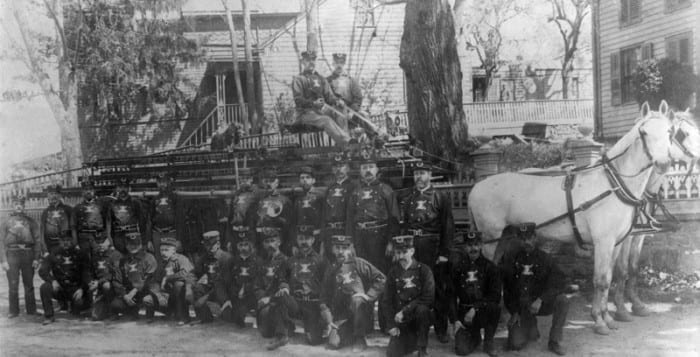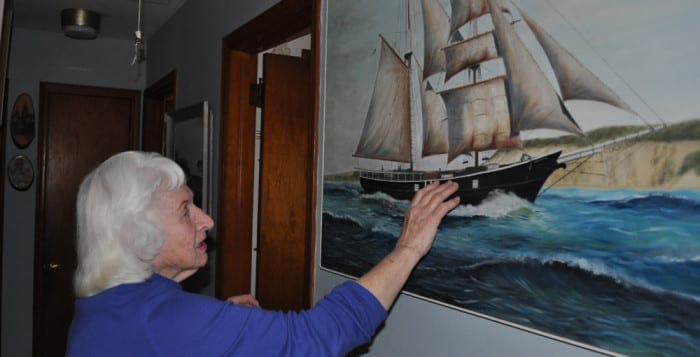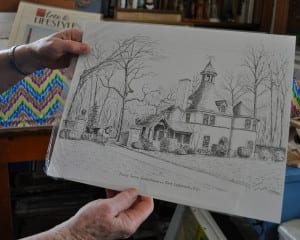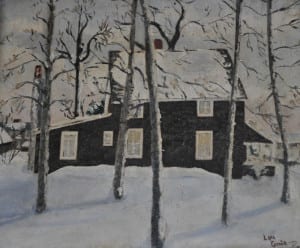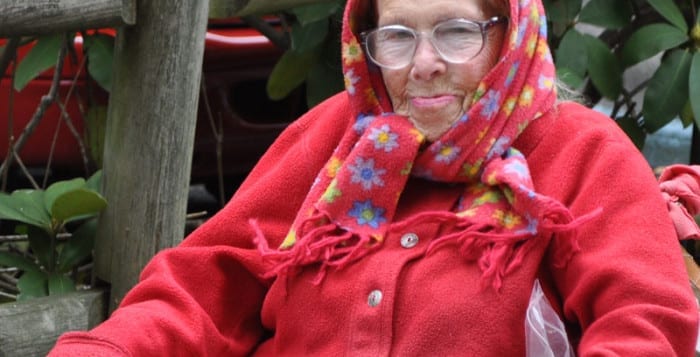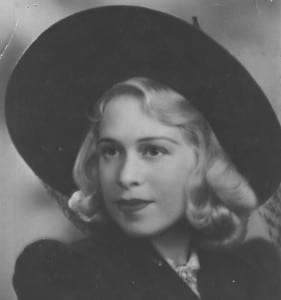Erica Kutzing has already pulled 15 cats from a condemned house and its surrounding property on Oakwood Road in Port Jefferson, but she said there are between 20 and 25 more left.
“And that’s of the ones that we can see.”
There could be more hiding — the property has a lot of foliage and the house is a mess. There are flies and cobwebs all over the junk inside, the ceiling is coming down in some places and there is a strong smell, partly of cat urine.
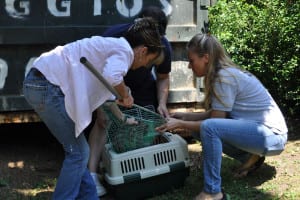
Kutzing, director of operations at Save-A-Pet Animal Rescue and Adoption Center in Port Jefferson Station, would like to continue taking the friendly cats back with her to the shelter, but it is full. Her operation on Oakwood Road is partly on hold until some people start adopting the animals and free up space. Until then, with the permission of the owner, she visits the site every day to deliver food and clean water, and to help the cats that need it the most.
The first day she brought food to the house, she said, “they swarmed us,” and the cats tried to chew through the bags of food. “They were starving.” In the roughly three weeks since she started feeding them — with donations from the community — she estimates they’ve each gained about five pounds.
On Monday, Kutzing brought the usual five cans of wet food and full bag of cat food to Oakwood Road. A couple of cats watched as she cleaned aluminum trays filled with muddy rainwater from a storm the night before and replaced the dirty water with the food, with the help of volunteers Frankie Floridia and his son Dylan Inghilleri. Then other felines started to emerge from bushes and windows and below a dumpster on the front lawn.

Most of the animals, Kutzing said, are the property owner’s pets. While he loves them and his pet ownership started with the best intentions, “cats can breed faster than you can stop them.” Some of those still at the house are friendly, but they have become wild because of their living situation.
The Port Times Record reported in November that there once also were four Alaskan huskies on the property, but they were removed when firefighters investigating smoke found unsafe conditions inside the house. That’s when it was condemned.
According to the Suffolk County District Attorney’s office, four misdemeanor charges of animal cruelty are still pending against the owner.
Dori Scofield, director of the Town of Brookhaven Animal Shelter and Adoption Center and founder and president of Save-A-Pet, said there are many houses like this all over the town and the country, where people have good intentions that “go haywire,” and their properties are overrun with animals. “They get in over their heads.”
Scofield was the one who first received a call, in her role with the town, about the house and went to investigate.
She was also at the site Monday, and netted a 6-month-old gray kitten that Kutzing said had a broken tail and possibly a broken pelvis.

Kutzing explained that it was painful for the kitten to walk and “with every step her lower end drops to the floor.” She added when the kitten eats her daily deliveries, usually she will lie down in the aluminum tray.
Monday, the cat ate from outside the tray, but she sneezed multiple times throughout her meal. Kutzing explained that the kitten also has an upper respiratory infection.
After Scofield quickly threw the net over the gray kitten, Kutzing and Floridia helped her put the kitten into a carrier to take back to Save-A-Pet for treatment. Afterward, she will likely be released back at the house.
Scofield said she didn’t want to see the cats stay at the condemned house permanently, and it would be ideal for someone with a barn to take in the feral cats.
Kutzing stressed the need for adoptions and that the cats at Save-A-Pet that had been pulled from the Oakwood Road house have been medically cleared and are good with other cats “because it’s all they know.” The organization needs homes for both the young cats and the older ones, she said, adding that older cats can be positive because they know how to use a litter box and owners will already know the cats’ personalities.
Scofield also stressed that people who find themselves with a large number of animals “shouldn’t be afraid to reach out for help,” either from Save-A-Pet or Brookhaven Animal Shelter. “We’ll do whatever we can to help them.”
Kutzing urged against concerned residents visiting the Oakwood Road property on their own. She said it would be trespassing and she doesn’t want anyone “to hinder our trapping by scaring the cats,” because they are now comfortable around the volunteers.


